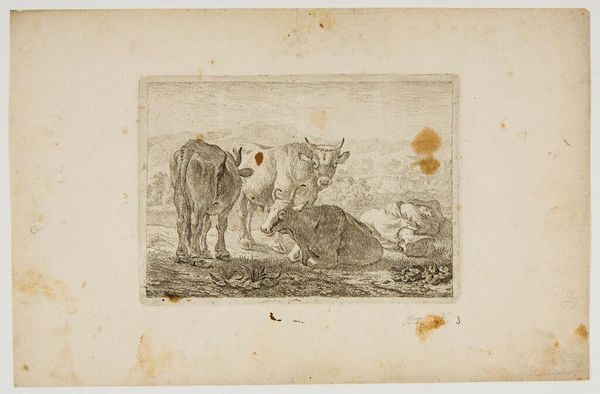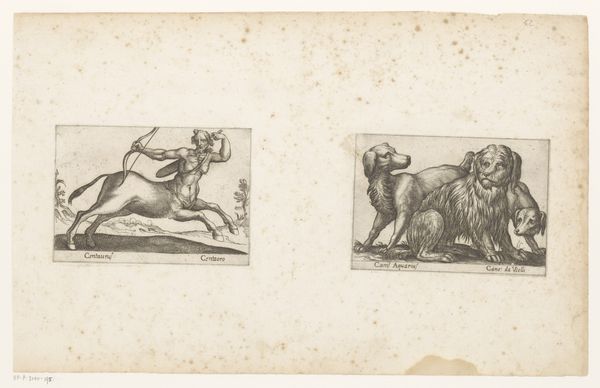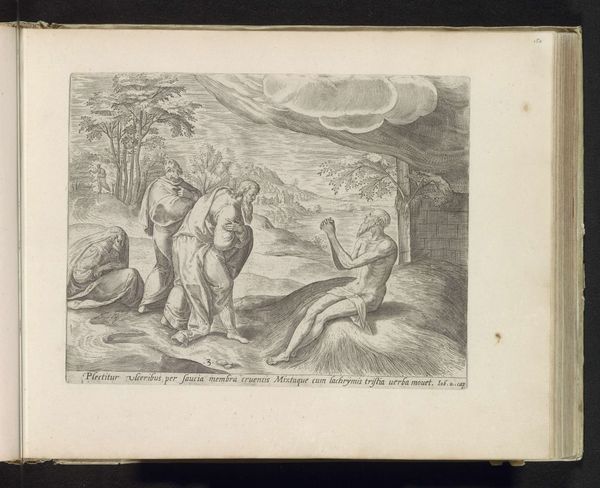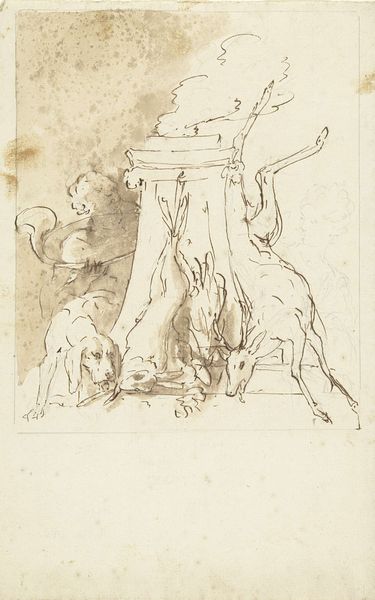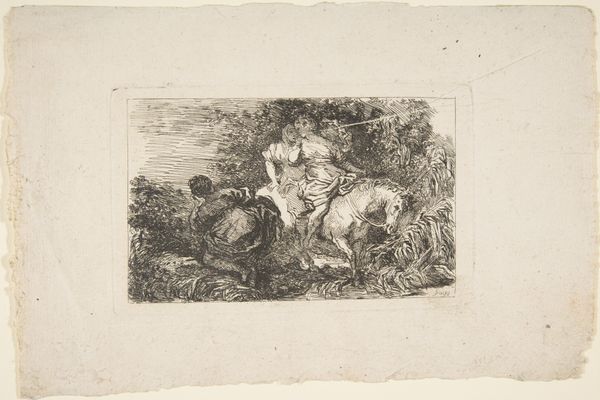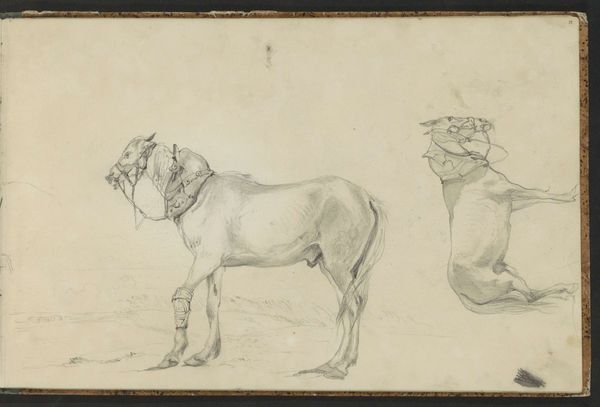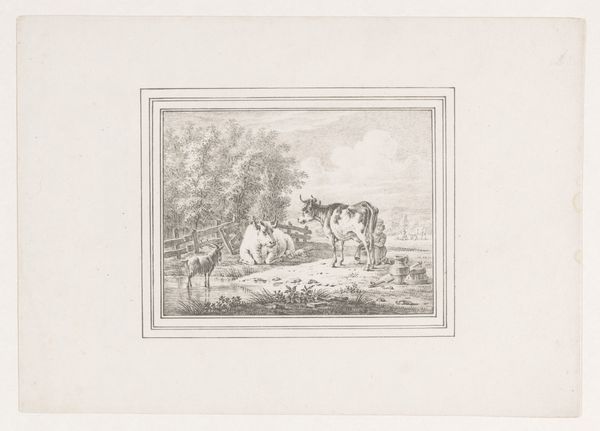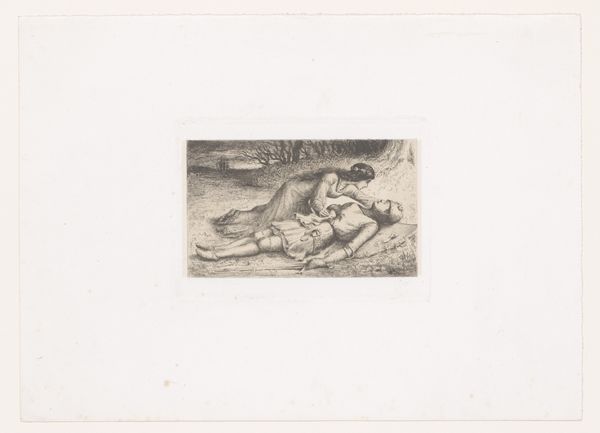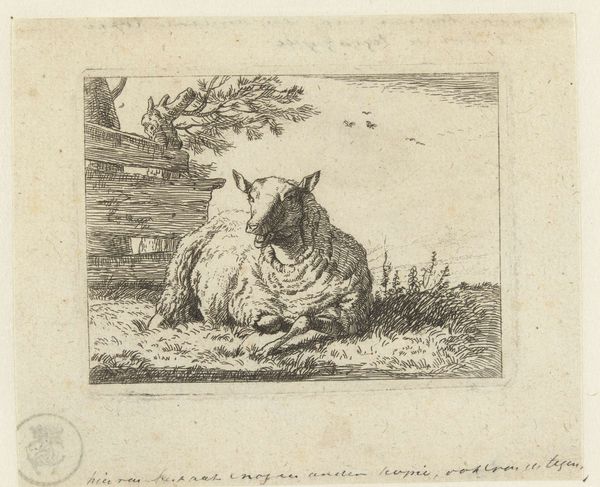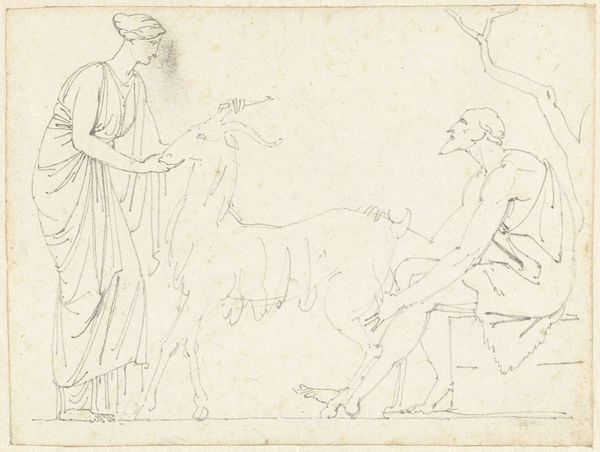
drawing, ink, pen
#
drawing
#
pencil sketch
#
landscape
#
ink
#
pen-ink sketch
#
sketchbook drawing
#
pen
#
genre-painting
Dimensions: height 243 mm, width 360 mm
Copyright: Rijks Museum: Open Domain
Curator: This ink and pen drawing from 1632, by Adriaen Matham, is titled "Hond naast jachtuitrusting en buit in landschap" - which translates to "Dog beside hunting gear and prey in landscape." It's a small work, a page seemingly torn from a sketchbook. Editor: Well, right off the bat, that dog's gaze just grabs you, doesn't it? A bit melancholic, maybe a touch guilty? Like, "Yeah, we got 'em, but...was it worth it?" And those wispy reeds in the background—so simple, yet they give the whole scene such a feeling of spaciousness. Curator: The sketch is particularly evocative when we consider the societal context of the Dutch Golden Age. Hunting, while a sport, also reflected ideas around land ownership and access to resources—the drawing serves as a tiny window into the dynamics of privilege during the time. And what might that hunting dog be symbolizing for Matham himself? The dog has performed its role in helping his owner secure resources. Editor: Huh, that's a heavy way to put it. I guess my first thought was just, the poor duck! And the dog almost seems ashamed about the violence of it all. But I see your point – it’s like a snapshot of power. This is an uncomfortable truth that deserves to be examined, thank you. But how do you even get all that out of some ink lines? I need more experience, clearly. Curator: It’s a matter of considering not just what is depicted, but also what is implied. In that era, hunting imagery often signified social standing. Matham may subtly critique or reflect upon these hierarchies. His choice of focusing on the dog introduces an element of empathy which seems critical. I believe Matham subtly comments on how class impacts us all, people and dogs alike. Editor: The quiet stillness that Matham was able to produce with simple lines always gets to me. It almost makes you want to scratch him behind his ears and say, "It’s okay, buddy, you did good". We always seem to bring everything back to contemporary theory. This is a reminder to think of the ethics involved in our every act. Curator: Indeed, and it highlights the continued relevance of artworks like this one. I suppose that focusing on this can help to examine power and social dynamics as we encounter them daily. Editor: I completely agree! Now that's something worth howling about!
Comments
No comments
Be the first to comment and join the conversation on the ultimate creative platform.
